Whether it’s through recreation, relaxation or nature, there are a lot of faces that can be found on the American River Parkway.
#FacesOfTheParkway explores the faces that you can see when you are out exploring our urban jewel.
Check this page and social media for regular updates.



Sacramento County Regional Parks Maintenance Crews
Sacramento County Regional Parks Maintenance Crews work hard to clean and maintain our open spaces. They are essential to keeping the Parkway accessible for the whole community.
We celebrate their efforts and thank them for taking on this challenge.





Anglers
Fishing is a popular activity on the American River Parkway. Anglers of all types take to the water to catch Chinook Salmon, Steelhead Trout, Striped Bass and Shad throughout the year.
The range of shallow and deep water as well as the tributaries in the river make it ideal for fishing. This can be done from the shore, in the water or from a boat.
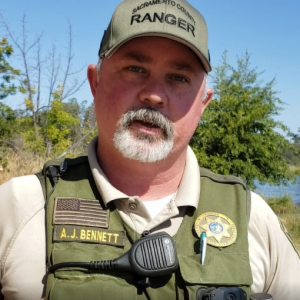
Sacramento County Regional Park Rangers
Sacramento County Regional Park Rangers not only serve as law enforcement on the American River Parkway, but also as ambassadors.
They patrol 365 days a year, becoming experts of every inch of the Parkway. They respond to crimes, fires, rescues and wildlife calls.
Ranger A.J. Bennett has been with the department for 17 years, starting as a Ranger Assistant. Through his experience, he has gained knowledge of what historical points of interest are on the Parkway, the best places to fish and the best trails to explore.
Even when not on duty, you may find Ranger Bennett on the Parkway hiking and fishing.
Next time you a Ranger on the Parkway, be sure to say hi and ask them what they like about the Parkway.
Learn more about the Sacramento County Regional Park Rangers.
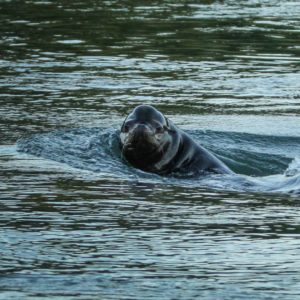
California Sea Lions
Starting each September, Chinook salmon start making their way up the Delta and into the American River where they find the shallow rocky areas for spawning.
As the salmon move up, so do the California sea lions. They can be seen from the confluence of the Sacramento River and American River up past River Bend Park.
Sea lions are different from seals in that they have ear flaps on their ears and can use their hind flippers to scoot along land. Seals only have tiny openings for their ears and can only wriggle, roll or slide to move around out of water.
Sea lions were named after lions because of their loud roars. Males in some species also grow thick manes around their necks.
You can find California sea lions along the Pacific coast from southeast Alaska to central Mexico. They live 20-30 years and males can reach 8 feet long.
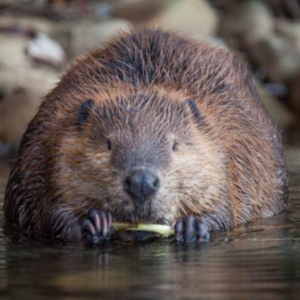
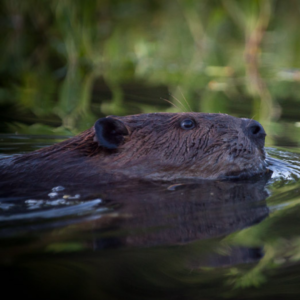
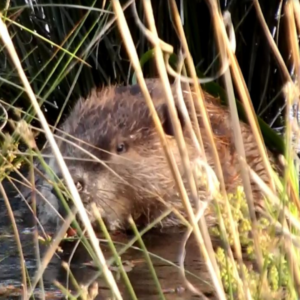
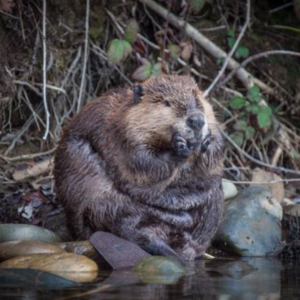
Beavers
Beavers are the largest members of the rodent family, growing 3-4 feet long. They are monogamous for life and give birth to 1-4 kits per year.
Beavers have incredibly strong teeth because of an enamel that contains iron compounds. This gives the teeth a striking orange color and allows them to bite through trees like cottonwoods and aspens.
Beaver tails serve many different purposes, including warning of danger. If a beaver sees a predator, it will slap its tail on the water to warn other beavers in the area to dive for deeper water.
When they do go underwater, beavers are able to hold their breath for as long as 15 minutes. This is due to their extended long capacity. They also have a set of transparent eyelids that act like goggle.
Giant beavers – modern beavers’ Ice Age cousins – grew up to seven feet long and more than two feet high. They were unable to adapt to the changing climate and died out around 10,000 years ago.
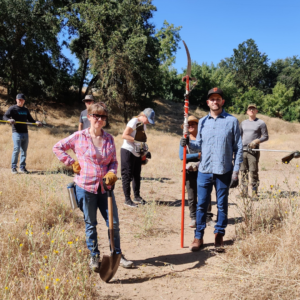

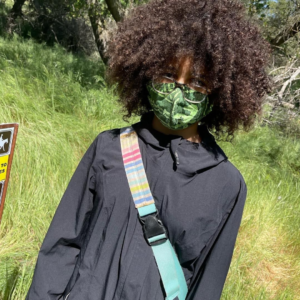
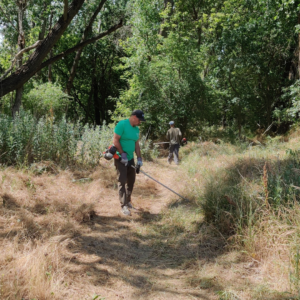
American River Parkway Foundation Trail Maintenance Volunteers
Running throughout the Parkway are 30 miles of unpaved, multi-use trails. These trails provide pedestrians and equestrians an alternative to sharing the Jedediah Smith Memorial Trail with cyclists in much of the area.
American River Parkway Foundation Volunteers help maintain the trails, ensuring they are at six feet wide and have an eight-foot clearance to enhance access and safety for trail users. Annual maintenance involves mowing grass and weeds, clearing encroaching brush, replacing vandalized signs and removing downed trees. This maintenance happens throughout the year.
The trail maintenance program started in 2009 with assistance from the Sacramento Running Association and continues today.
Learn more about the Trail Maintenance Program.
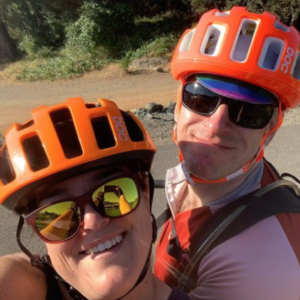
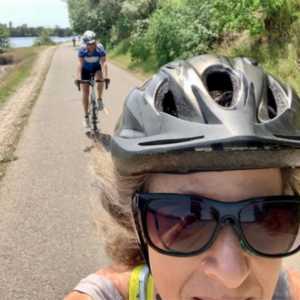
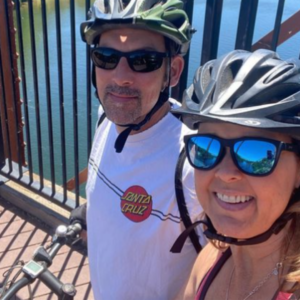

Bicyclists
The Parkway is a haven for all bicyclists, from those out for a casual ride to commuters to distance riders.
The Jedediah Smith Memorial Trail stretches through all 23 miles of the Parkway and into the Folsom Lake State Recreation Area for a total of 32 miles. For those looking for a longer ride, the Trail connects to the Sacramento River Bike Trail at one end and the Johnny Cash Trail at the other.
It’s recreational opportunities like these that make the Lower American River a National Wild and Scenic River.
We like to celebrate bicycling on the Parkway every year with our Ride the Parkway event, taking place this year on October 22. This event features a casual ride with stops at different vendors for snacks along the way and ends at William B. Pond Recreation Area with barbecue, libations and live music. (Not into cycling, you can come just for the barbecue!)
Take advantage of Early Bird Pricing. Learn more about Ride the Parkway.
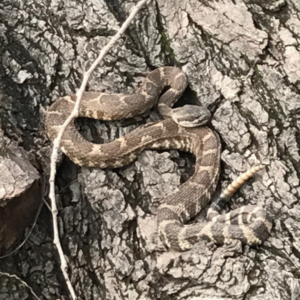
Snakes
The most commonly known snakes on the American River Parkway are rattlesnakes, but you will also find gopher snakes, king snakes and garter snakes.
Some things to know about snakes on the Parkway:
- Rattlesnakes are the only poisonous snake on the Parkway. They can be identified by the rattles on their tails and their spade-shaped heads. They can also hiss.
- Gopher snakes have similar markings as rattlesnakes. However, they are skinnier, grow to be larger than rattlesnakes and are not poisonous.
- Most hatchlings emerge during the late summer, early fall (July-October).
- Snakes can swim.
- California King Snakes do eat rattlesnakes.
Visit for more information on identifying rattlesnakes and what to do in the event of a bite.
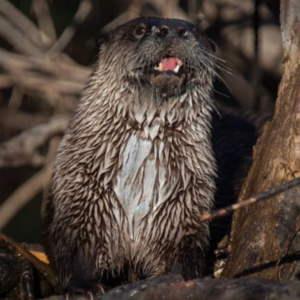
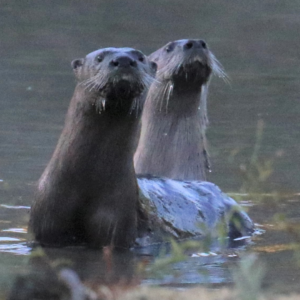
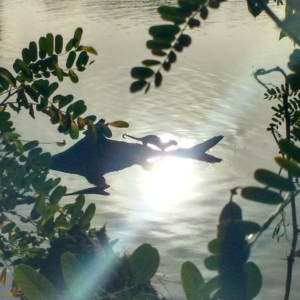

River Otters
Since our team spotted five river otters playfully swimming in the Arden Rapids yesterday, we decided to highlight them today in #FacesOfTheParkway.
River otters are playful and social creatures that live throughout the American River Parkway. Though they are often spotted in the river, they actually spend about two-thirds of their time on land.
They’re also excellent runners reaching speeds of 15 miles-per-hour and can slide on mud and snow even faster.
When they are in the water, river otters can dive as deep as 60 feet and stay under for up to eight minutes. They do this by closing their nostrils to keep water out.
Don’t mistake river otters for sea otters. River otters are smaller, spend more time on land and don’t float belly-up like sea otters do.

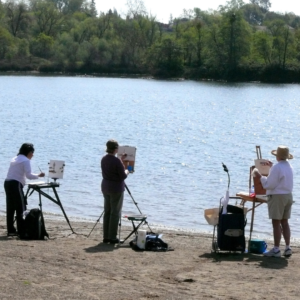
Painters on the Parkway
A diversity of landscape, plant life and wildlife combined with the beauty of the American River makes the Parkway an ideal location for local artists to escape to for creativity. It’s no wonder the Parkway is called our Urban Jewel.
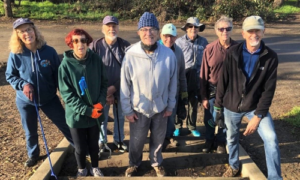

American River Parkway Foundation Mile Stewards
American River Parkway Foundation Volunteer Mile Stewards are our eyes and ears on the ground. They dedicate a minimum amount of hours per quarter to conserving their mile by helping to remove trash and graffiti, organizing group clean-up efforts and filing condition reports.
The Tzu Chi Foundation has been a Volunteer Mile Steward for Mile 9N for nine years and see it as part of their mission to serve the community. Nancy Ku represents the Tzu Chi Foundation.
See Nancy’s video.
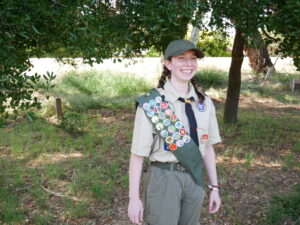
Scouting on the American River Parkway
Lauren Schilling is not afraid to take on a challenge. When it comes to scouting, for her it was earning the highest awards in both Scouts (Eagle Scout) and Girl Scouts (Gold Award).
She turned to the American River Parkway and the American River Parkway Foundation for both projects to achieve those awards.
For her Eagle Scout, she mapped out and replaced trail signs along the hiking/equestrian trail.
For her Gold Award, she developed a PSA explaining how to use the equestrian/hiking trail.
Lauren is not the only Scout to conduct her projects on the Parkway. It has been and will continue to be a resource Scouts can turn to. We’ll be here to help.
See Lauren’s video.


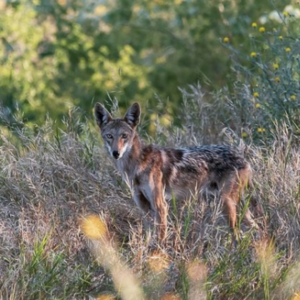

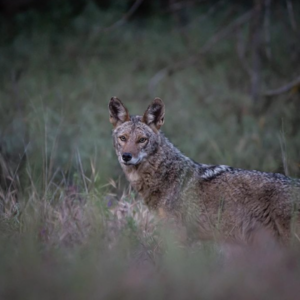
Coyotes on the American River Parkway
Coyotes are extremely curious animals and enjoy watching life go by on the American River Parkway. Most of the time they will keep their distance. But if you have a dog, coyotes may get a little closer and even “bluff” charge if you’re in their territory or near their dens or pups.
Learn more about coyotes along the Parkway and how you can help keep them wild.

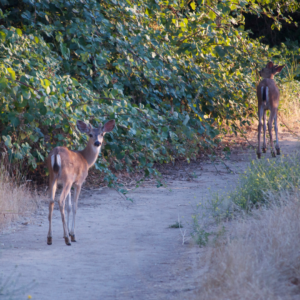

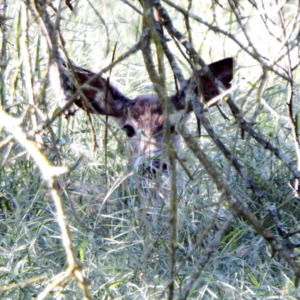
Black-tailed Deer on the American River Parkway
Black-tailed deer are a common sight throughout the full 23-mile stretch of the Parkway. They’re part of the mule deer family and are recognized by their tails that have black or dark brown on top and white underneath.
Mating season usually occurs in November or December with fawns arriving in June-July. After birth, does and fawns join with others to form family groups while bucks form bachelor groups.
A fun fact about black-tailed deer is that their coats change colors throughout the year: in the summer they’re reddish-brown and in the winter they become brownish-gray.
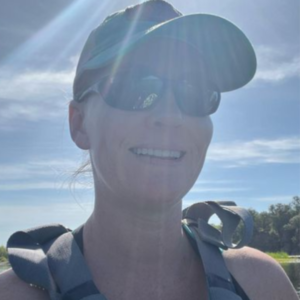
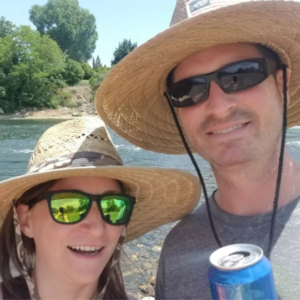

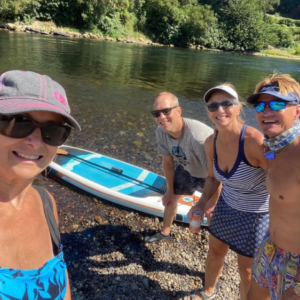

On Water Recreationists on the American River Parkway
With the temperatures warming up, many Parkway users will escape to the water for on water activities. The Parkway is a great place for kayaking, paddle boarding, canoeing and boating.
But if you’re hitting the water, make sure to wear a life vest. Cold water temperatures and underwater currents can make the calmest waters more dangerous than they appear.






Runners on the American River Parkway
Hundreds of runners every day come to the Parkway to utilize the 23-miles of paved, multiuse trail as well as the 30-miles of unpaved trail. This includes everything from novices to Olympic runners like Sacramento native Kim Conley (learn more about the role the Parkway plays in her story).
It’s because of the recreational opportunities like running that the Lower American River is recognized as part of the National Wild and Scenic River System.
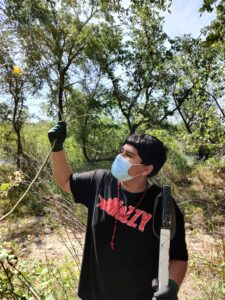
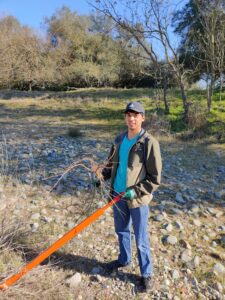
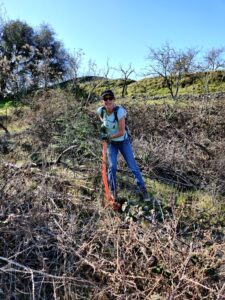


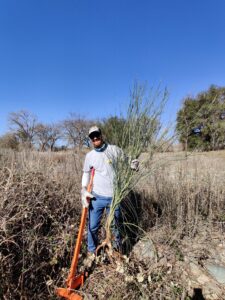
American River Parkway Foundation Invasive Plant Management Program Volunteers
Invasive plants are a real threat to the Parkway. They outcompete native plants, reduce food for wildlife and increase fire danger.
Through our Invasive Plant Management Program, our volunteers remove over 30,000 plants every year.
During events, volunteers use specialized equipment to remove French broom, Scottish broom, Spanish broom, red sesbania, yellow star thistle, stinkwort and more. Doing this allows our natural systems to flourish and prevents the loss of vital resources.
Learn more about our Invasive Plant Management Program
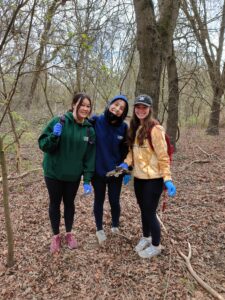

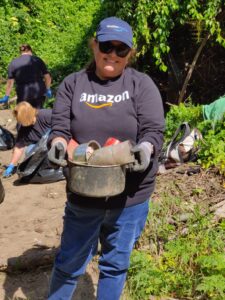
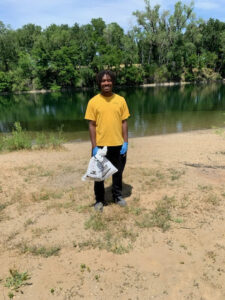
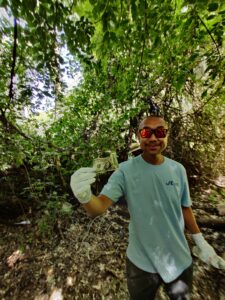
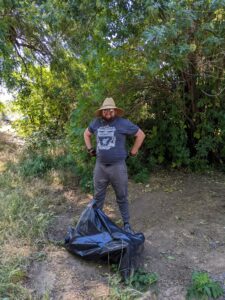
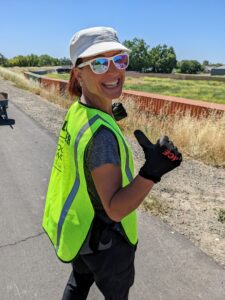
American River Parkway Foundation Clean-Up Volunteers
Parkway Foundation volunteers are vital to our efforts to conserve the Parkway. Every year, thousands of them dedicate some of their free time to removing trash and debris.
On average more than 130,000 pounds of trash are removed from the Parkway annually through our clean-up program.
Clean-ups are essential to the Parkway because they reduce blight and decrease the amount of pollution that ends up in our rivers and ecosystems. This is an issue that has grown as more illegal campers make their way to the Parkway.
Clean-ups are also great opportunities for team building and family bonding as well as to collect community service hours.
Above are just some of the faces from our clean-ups this year.
You can participate by signing-up for our larger clean-ups (Spring Clean-Up and the Great American River Clean-Up) or our monthly Sustainable Saturday Clean-Ups. We can also work with you to form your own group clean-ups, which take place throughout the year along the full 23-miles of the Parkway.
